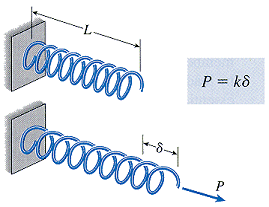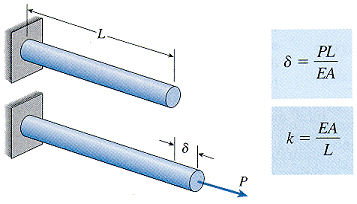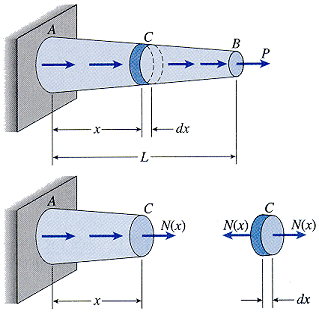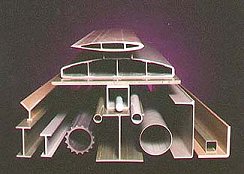springs
natural length, L - unstressed, relaxed, or free lengthstiffness, k - spring constant; the force required to produce a unit elongation

spring testing
prismatic bars
prismatic bar - structural member having a straight longitudinal axis and constant cross section throughout its length
elongation, δ (+ stretching, - shortening)

Assumptions
- load acts through centroid of cross section
- homogeneous material
- linear-elastic material (i.e., follows Hooke's law)
|
bars with prismatic segments The bar may consist of several prismatic segments, each with different: |
 |
|
|
tapered bars The bar may have: |
 |
|


